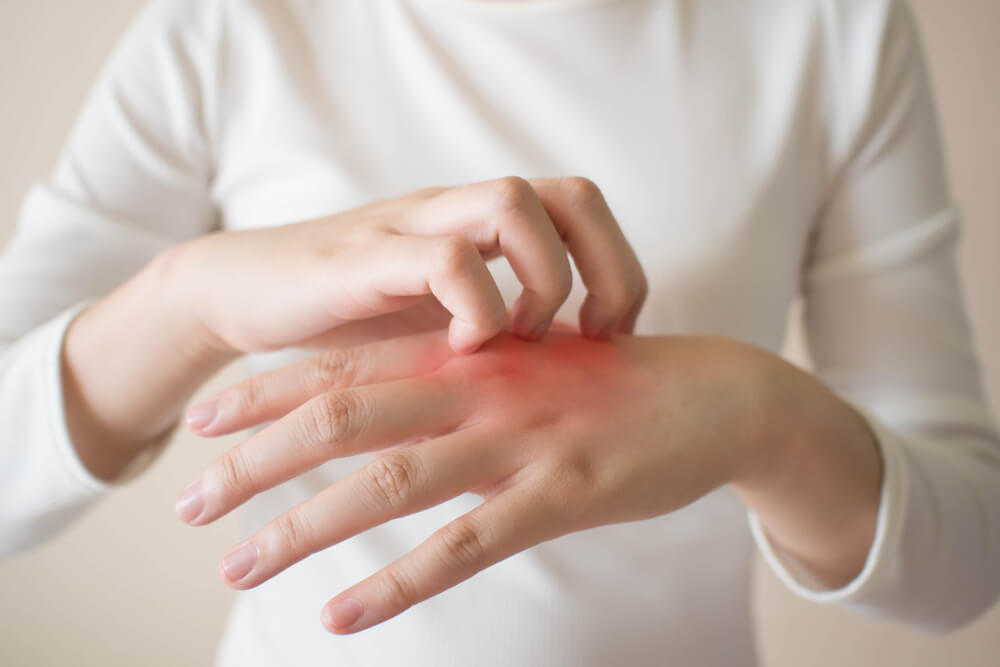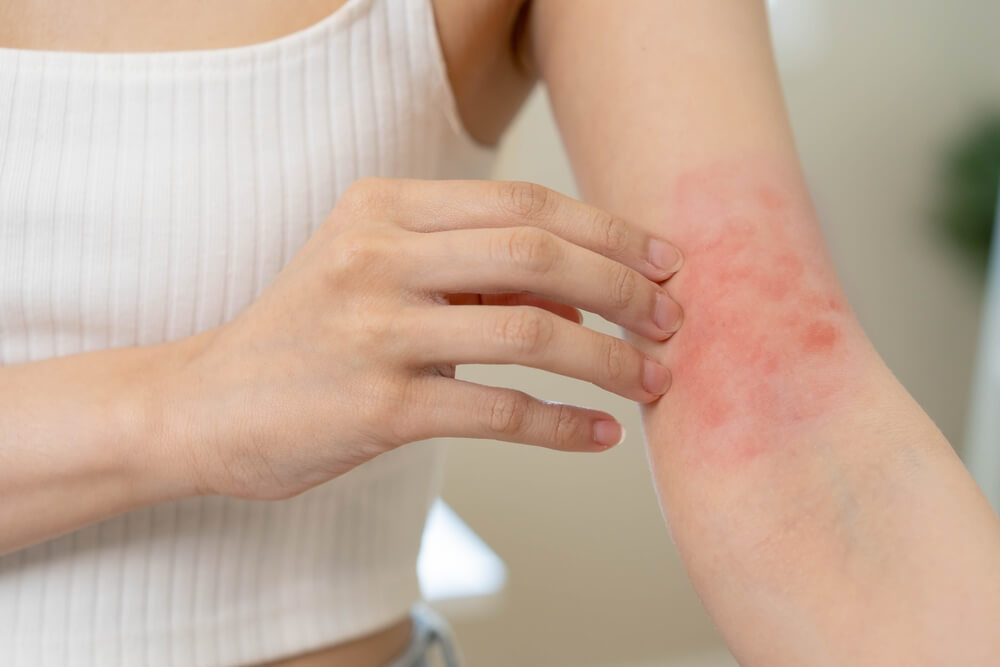Whether due to allergies or a simple skin irritation, rashes are prevalent everywhere. Unpredictable and occasionally inconveniencing, they are an aspect of daily life for many. A rash is not usually serious but can be uncomfortable and irritating. Itching, redness, and the aesthetic implications often compel individuals to search for immediate solutions.
Some rashes may necessitate consultation with a dermatologist, particularly when they seemingly spring from nowhere, persist for extended periods, or are linked with other worrying symptoms. However, for the most part, mild rashes can be alleviated using home remedies before needing professional intervention. These remedies, often made from nature’s produce, offer immediate relief and can nip the issue in the bud, preventing further inflammation.
The relevance of home antidotes is increasingly growing, not to devalue professional medical counsel but as an effective ‘first-aid’ response – a versatile, readily available, and cost-friendly route to healing. In this discourse, we delve into various home remedies, natural solutions for rash, and effective rash relief options to equip you with the knowledge to soothe and clear skin irritations effectively within your home’s confines.
From understanding the basics of skin rashes and their causative agents to exploring efficient home remedies and preventive measures, we hope to arm you with beneficial tricks to keep your skin rash-free.
Identification and Understanding of Rash
Before resorting to rash treatment remedies, it is paramount to identify and understand the type of rash you’re dealing with. Skin reactions can occur due to various reasons, such as:
- allergic responses
- skin conditions like eczema
- reactions to certain drugs or foods
- insect bites
Classifying Various Types Of Rashes And Typical Symptoms
Rashes come in different forms and may often disguise themselves as simple skin inflammation.
- Eczema or dermatitis entails dry, itchy patches.
- Allergic reactions usually lead to hives, redness, scaling, and swelling.
- Ringworm is actually a fungal infection represented by a red circular rash with clearer skin in the middle.
- Thick red, scaly patches characterize Psoriasis.
- Heat rash, athlete’s foot, rosacea, and shingles are other types of rashes with their unique symptoms.
Determining your specific type of rash for appropriate rash cure methods is essential. Doing so will also enable prompt and effective rash relief.
Debunking Myths About Rash Causes And Progression
Misconceptions, rashes, and their causes surround the realm of skin afflictions and top the list of misunderstood skin concerns. Various myths suggest that rashes are contagious, always signify an allergy, or indicate poor hygiene. However, the truth is far more complex.
Allergies can indeed cause rashes — poison ivy is a perfect example. Yet, many non-allergenic irritants can also cause skin inflammation. Similarly, while some rashes, such as Ringworm and athlete’s foot, are undoubtedly contagious, others, such as eczema, are not. Finally, some rashes have nothing to do with cleanliness and can develop spontaneously.
Clearing such misconceptions is crucial for progressing toward home remedies for rash and rash-clearing treatments. Misunderstandings not only hinder effective treatment but can also cause unnecessary anxiety and stress.
Simple and Effective Remedies for Rash Care
Now that we’ve understood and identified rashes let’s delve into the healing process and explore how to get rid of the rash. You can experiment with an array of rash cure methods at home, some of which are conventional products you may already have in your kitchen or medicine cabinet.
Discussing Various At-Home Treatments Using Common Household Items and Over-The-Counter Creams and Antihistamines
Your home may be a treasure chest filled with home remedies for rash. Simple ingredients like oatmeal, baking soda, apple cider vinegar (diluted), or aloe vera gel can aid in soothing skin rash. For instance, a colloidal oatmeal bath helps to calm inflammation, and a baking soda mixture can reduce itching.
Over-the-counter creams and ointments are another effective rash relief option. Hydrocortisone creams, Calamine lotion, and antihistamine creams such as Benadryl reduce itchiness and inflammation associated with rashes.
Ice packs or cold compresses can also alleviate symptoms, especially if you have a heat rash. It’s also beneficial to use a mild, fragrance-free cleanser and moisturize your skin regularly to promote healing and prevent skin drying.
Guidelines on How and When to Use These Remedies Effectively
Knowing the best treatments for rash is one thing, but it’s equally important to understand the right way to use them. For most home remedies, consistency is crucial. Whether applying aloe vera gel, an oatmeal bath, or a baking soda mixture, these should be used regularly for some days to gain maximum benefits.
Specific remedies like hydrocortisone creams or antihistamine tablets should be used as directed on the package or by your physician. Excessive usage may cause side effects like skin thinning.
Most importantly, if the rash persists despite your best efforts with home remedies, if it worsens, or if it’s accompanied by other concerning symptoms such as fever or difficulty breathing, you should immediately consult a healthcare professional. While home treatments are great first aid, they don’t replace professional medical advice.
Tips on Rash Prevention and Maintenance
Now that we have explored numerous ways to cure a rash at home, we should recognize the importance of rash prevention. After all, prevention is always better than cure. Proper hygiene practices, dietary changes, and regular skin care can prevent skin rashes and reduce their reoccurrence.
Offering Advice on Lifestyle Changes like Diet and Hygiene That Could Decrease the Chances of Future Rashes
Specific dietary changes, such as incorporating anti-inflammatory foods, can help with preventing rashes. Foods rich in Omega-3 fatty acids, antioxidants, and vitamins A, C, and E are excellent for skin health. Limiting potential allergenic foods, such as dairy and gluten, can also be beneficial if you suspect food-triggered skin reactions.
Good personal hygiene is another step towards rash prevention. Daily bathing with gentle soaps, avoiding harsh chemicals, and moisturizing can maintain your skin’s overall health and help to prevent skin rash.
Similarly, loose and breathable clothing can decrease the possibility of skin irritations and rashes, especially in hot or humid weather. When seeking preventive measures, consider incorporating natural rash remedies into your routine to soothe and protect your skin from potential irritants.
Emphasizing the Importance of Follow-up Care to Maintain Skin Health and Prevent Reoccurrence
While many home remedies provide immediate rash remedies, it’s crucial to maintain good skincare practices to prevent recurrence and ensure healthy skin in the long run. Regularly moisturize, use sun protection, and stick to hypoallergenic products if you have sensitive skin. If using over-the-counter creams, it’s essential to continue using them until the rash has completely cleared to prevent reoccurrence.
Follow-up care is equally crucial when it comes to identifying potential triggers. Careful avoidance can prevent future irritation if a specific rash outbreak is due to an allergen. Utilizing these tips for rash healing and prevention, along with the healing skin irritation treatments previously discussed, can ensure lasting skin health.
Remember, despite these measures, some rashes may be stubborn or indicative of an underlying condition, so it is best to consult a healthcare professional.

Empowerment Through Knowledge and Effective In-Home Care
Throughout this discussion on how to get rid of a rash at home, the focus has been twofold — understanding the nature of varying skin conditions and adopting appropriate, informed care. Rashes may take many forms, each unique in their cause, progression, and manifestation. One can tailor a remedy that best relieves their specific symptoms by identifying these nuances.
While a dermatologist’s intervention may sometimes be necessary, many rashes can be effectively managed or significantly improved using at-home treatments.
In presenting a repertoire of strategies— encompassing everything from household remedies to over-the-counter medications, lifestyle tweaks to hygiene practices— the aim has been to equip you to take charge of your skin health. Rather than surrendering to discomfort or distress, you now possess the tools to alleviate symptoms using helpful solutions and preventive steps.
Being empowered with this knowledge paves the way toward healing and fosters a sense of control and autonomy over your well-being. While skin rashes can be inconvenient, they need not dictate the quality of life. Armed with the correct information and resources, you can confidently navigate to more precise, healthier skin from the comfort of your home.
Remember, your skin is unique and deserves care that is sensitive to particular needs. By understanding these needs, you are well on your way to soothing skin irritations and keeping it healthy and vibrant for years. For further guidance on managing skin conditions and allergies, consider consulting Allergy and Immunology Center experts.


